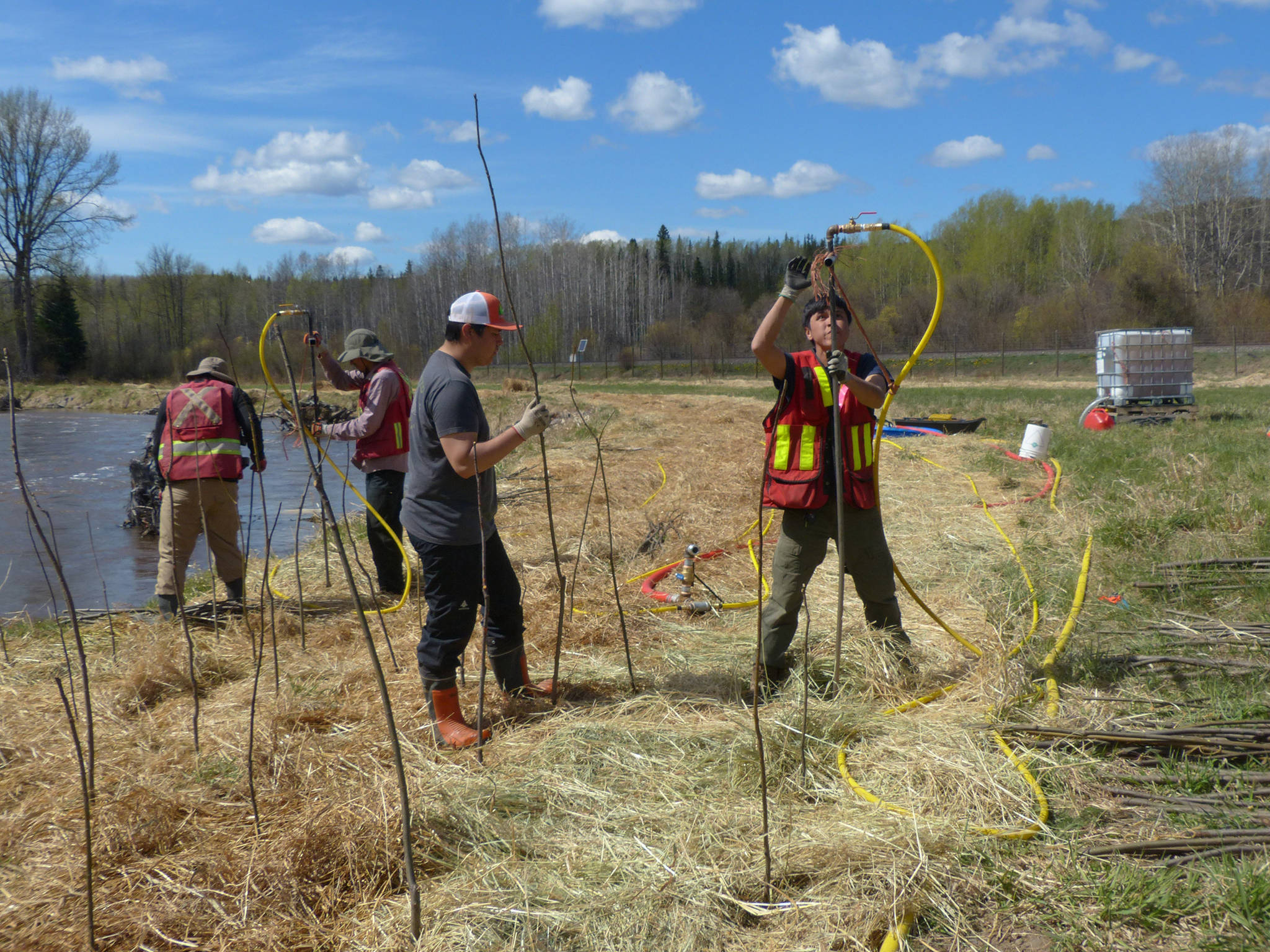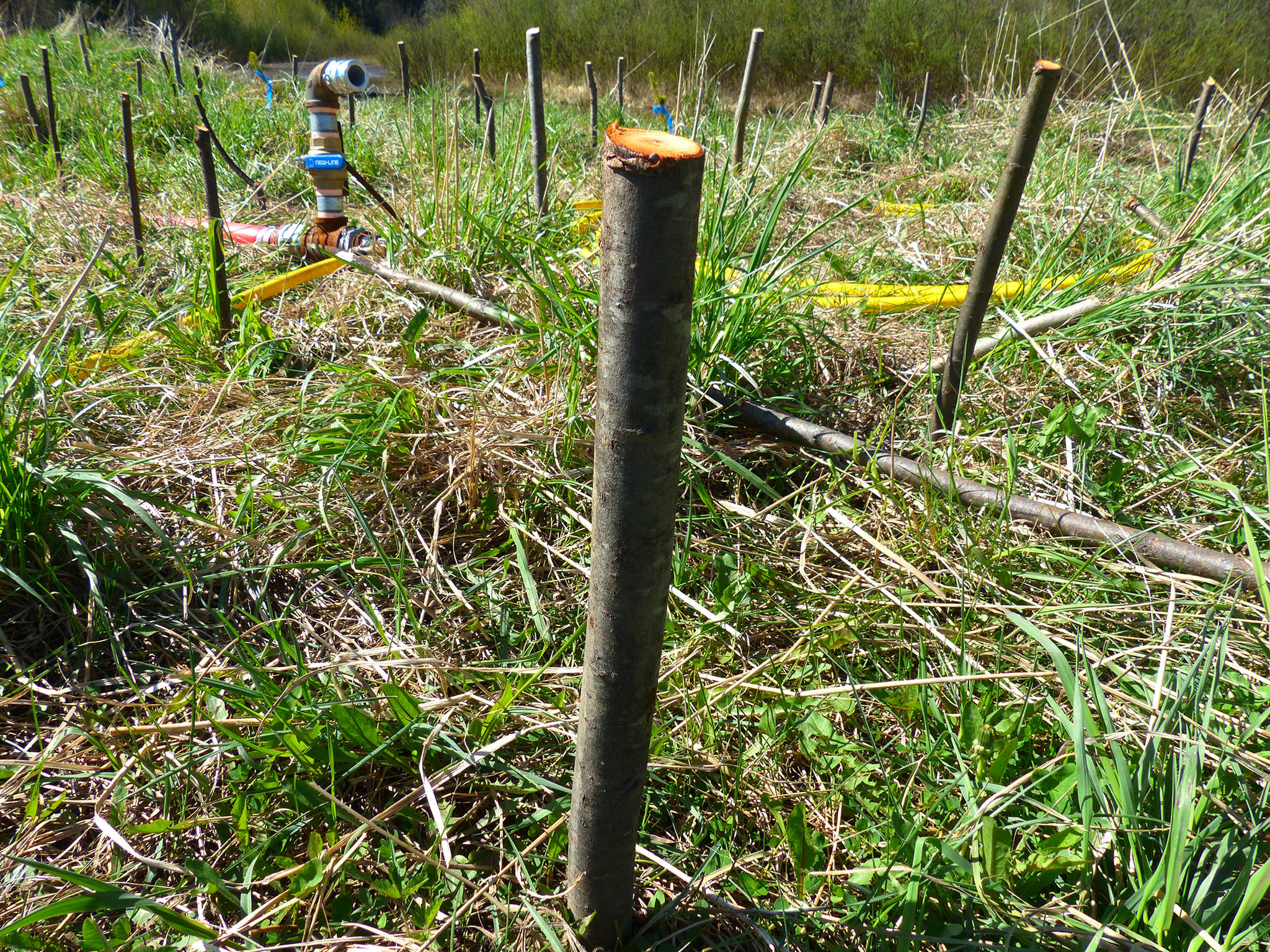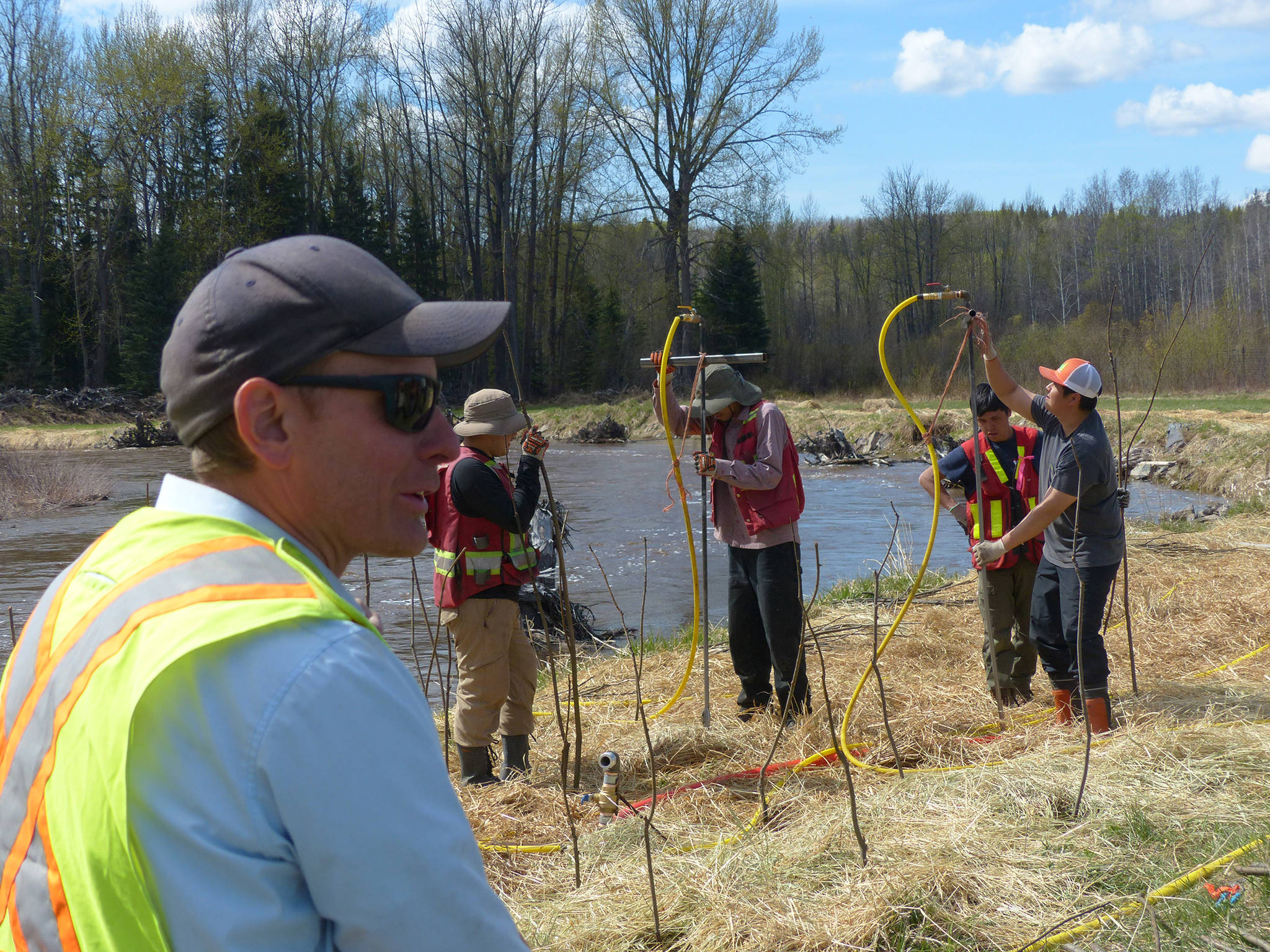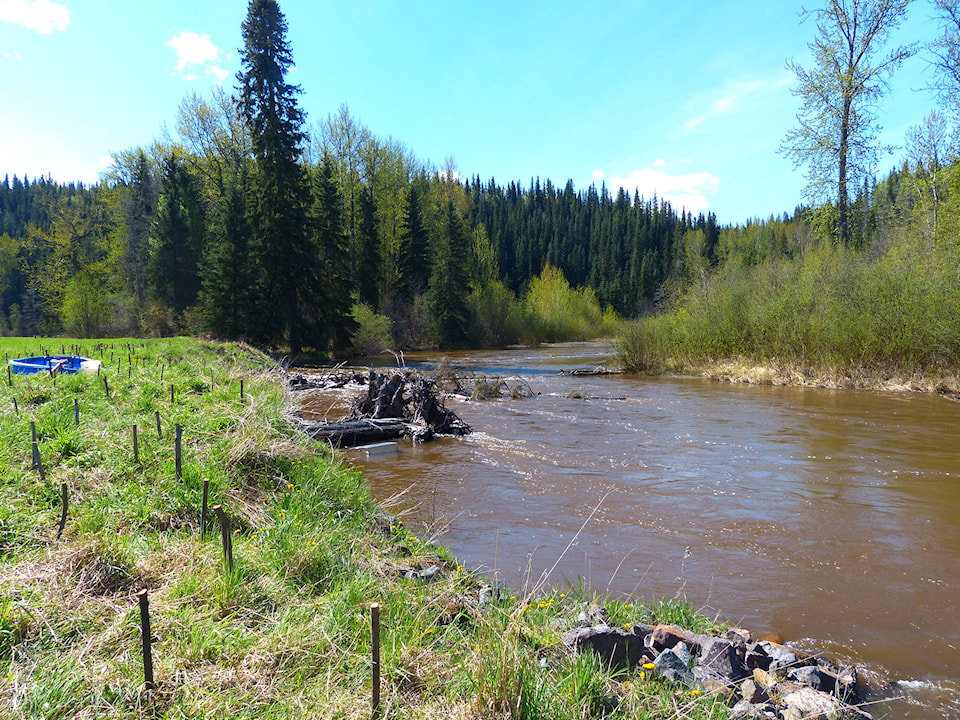Over 9,000 willows have been planted along the upper Bulkley River in Houston.
Between May 3 and May 15, Indigenous crews planted over 9,000 willows as a part of the Bulkley-Morice Watershed Sustainability Initiative, spearheaded by the Morice Watershed Monitoring Trust (MWMT) who are working collaboratively with A Rocha Canada (ARC), the Office of the Wet’suwet’en (OW), Department of Fisheries and Oceans (DFO) and individual landowners along the upper Bulkley river.
“Healthy riparian forests are crucial for a healthy watershed and healthy communities,” explains Cindy Verbeek, A Rocha’s Northern BC project Coordinator. “The trees and shrubs shade and keep the water temperatures cool, prevent run-off and erosion and provide habitat for birds, insects, salmon and more.”
This project is part of a broader plan to create a multi-year, community-based watershed restoration program that is providing opportunities for land owners, First Nations and local organizations to address pressing issues such as stream bank stabilization, riparian recovery and river health.
The upper Bulkley was identified as the first area of focus because of it’s shrinking salmon population and it’s status as one of the most impacted watersheds in the larger Skeena region.
The project is estimated to cost $540,000 with the majority of the funding coming from Healthy Watersheds Initiative as well as in-kind contributions from the Morice Watershed Monitoring Trust and Fisheries and Oceans Canada (DFO).
“This initiative will take advantage of synergies with other past and planned watershed management projects in the Upper Skeena, led by First Nations, environmental non-governmental organizations (ENGO), along with provincial and federal governments,” said Ian Sharpe, retired Regional Director of Environmental Protection with the Ministry of Environment (MOE) and advisor to the project, in a news release.
The first year will be dedicated to riparian restoration in the Upper Bulkley and will include stream-side planting and other low-tech restoration that benefit both landowners and the natural world. In the second year and years after, the group is hoping to initiate longer range restoration planning for the Upper Bulkley and Upper Morice basins, where more sophisticated restoration works are likely necessary.
“I am honored to be able to work with the people who have lived on and worked this land to learn from them and restore the river for the benefit of all,” said Verbeek.
For the Spring planting has concluded. The next steps would be to connect with landowners who might be interested in participating in the project this summer and fall, to visit sites to discuss stream bank stabilization and/or riparian recovery on their property and to write prescriptions for other high priority sites.
According to Verbeek, all identified sites won’t be completed this year but some planting will begin again in the fall and continued planning for next year will take place through to Dec. 15.



